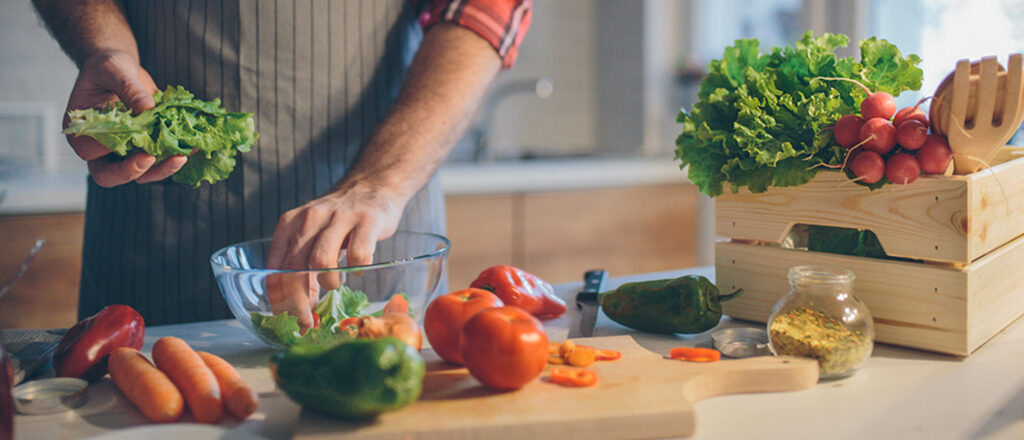
Meal Prep Done Well – For Health and Safety
A bowl of fresh, leafy greens topped with lean protein? Or a double cheeseburger and salty fries chased down with a chocolate shake? You know the answer. But healthy eating involves more than just making smart choices.
Healthy eating also involves preparing our food to preserve nutrients and prevent illness and disease.
Healthy Cooking Starts Here
When preparing food for your family, try to preserve the nutrient value of the food, and use healthy fats, reasonable portions, and whole foods. Here are some tips.
- Use healthy cooking methods such as steaming broiling, grilling, and roasting. Frying is a no-no – it adds unhealthy fat to our diets which can contribute to disease.
- Cook foods in as little water as possible and as quickly as possible to preserve all water-soluble vitamins. Your body craves Bs and Cs.
- To add flavor to meals, use a variety of herbs and spices rather than relying on salt.
- Avoid packaged or processed foods. They are likely to contain added salt, sugar, and fats. The more processed foods we eat, the less likely we are to eat the phytochemicals and nutrients our bodies need.
Make A Habit Of Safe Food Preparation
Every home kitchen should be just as concerned about foodborne illness as any restaurant. Truth is, these illnesses usually come from bad food prep, serving, and storage at home. To keep your food as safe as possible, follow these guidelines.
1. Wash hands and surfaces – a lot. Wash your hands before and after you handle food or utensils – especially raw meat, poultry, fish, or eggs. Use hot, soapy water.
2. Wash all fruits and vegetables before eating. Don’t be lazy, give them a good scrub.
3. Separate raw, cooked, and ready-to-eat foods. This will help prevent cross-contamination. If you can, use separate cutting boards for these foods. If you can’t, wash your cutting board with soap between uses.
4. Cook foods to a safe temperature. Is it done yet? Check with a food thermometer. Uncooked or undercooked animal products can be unsafe.
5. Keep hot foods hot, and cold foods cold. To prevent bacteria growth, hot foods should be kept above 140 degrees and cold foods should be kept below 40 degrees.
6. When in doubt, throw it out. If you’re unsure that food has been prepared, served, or stored the right way, pitch it. And throw out any food that’s been left out for more than two hours.
Sources www.ewg.org/consumer-guides, www.epa.gov
